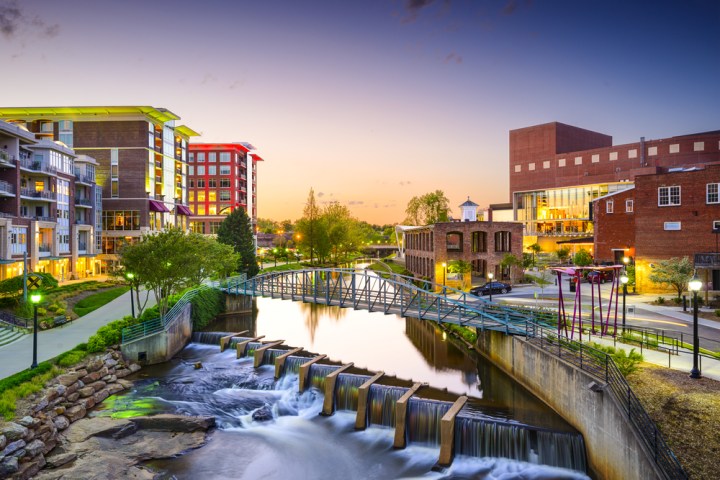Golf course redevelopment is clearly a hot topic in the real estate industry, and this is my third blog on the topic in 2018. The first blog discussed the decade-long litigation surrounding two golf courses in Myrtle Beach that eventually allowed for redevelopment despite strenuous objections of neighbors. The second blog discussed the national trend of neighbors objecting to golf course redevelopment on “NIMBY” (not in my back yard) grounds. This blog discusses a golf course closer to home, in Blythewood, The Golf Club of South Carolina at Crickentree.

An article in The State newspaper dated July 29 by Jeff Wilkinson discussed the bankruptcy, foreclosure and eventual planned redevelopment of Crickentree. The article states that two weeks ago, E-Capital, the national investment firm that owns the mortgage on the golf course, announced this bad news by email to the neighboring homeowners. A public meeting followed where an attorney for that firm told neighbors that the intent is to subdivide the golf course into small lots and build 450 homes. Basic math would indicate the planned density will be much greater than that in the surrounding neighborhood.
The property must be purchased through the bankruptcy proceeding and then rezoned in order to accommodate a residential subdivision on property now zoned for recreational use. And, of course, the neighbors are quite concerned about potentials hits on their property values.
According to Mr. Wilkinson’s article, the Columbia area may suffer from an oversaturation of the market with golf courses. Recently, he said, the former Rawls Creek of Coldstream golf course in Irmo closed, and its owner, the Mungo Homes Co., donated the 116-acre property to the Irmo Chapin Recreation Commission. The commission plans to link the 4.5 miles of cart paths to the Three Rivers Greenway river walks in Columbia and Lexington County. Donating golf courses for recreational purposes avoids possible rezoning and litigation issues that neighbors may raise.
Many golf communities were built in areas with good schools and work opportunities, making them particularly valuable for residential redevelopment. Developers generally do not want to walk away from that value.
So, what prohibits the development of these properties into residential subdivisions? Zoning is one of the challenges. Many golf courses are zoned for commercial uses to accommodate clubhouses, restaurants, pro shops and bars. Some, like Crickentree, are zoned for recreational purposes. But the main stumbling block may be the NIMBY attitude of neighbors. Residents near golf courses prefer that the properties be turned into parks, open spaces and natural preserves.
In the Deerfield Plantation cases in Myrtle Beach, the golf courses and surrounding residential subdivisions were originally developed beginning in the late 1970’s. The plats contained notes to the effect that the streets were dedicated for public use but the golf courses were to be maintained privately and were specifically not dedicated to public use.
The covenants gave the lot owners no rights, property, contractual, or otherwise, in the golf courses. A Property Report that was delivered to all prospective lot purchasers described the costs of golf memberships, which were not included in lot prices, and stated that to be allowed to use the golf courses, members would be required to pay initial dues and annual dues and fees. The real estate agents made it clear during the sales program that the mere purchase of a lot did not give a lot owner any right or entitlement to use the golf courses. The deeds of the lots did not convey any easements or other interests in the golf courses.
One plaintiff, who was also a real estate agent, testified that he was never told the golf courses would operate in perpetuity and that the real estate agents never told other potential purchasers that the golf courses would always exist on the properties.
What caused the golf courses to fail? When the golf courses opened, there were 30 – 40 golf courses in the Myrtle Beach area. By the time the golf courses closed, there were nearly 125 courses. Property taxes in the golf courses increased from $7,800 per year to $90,000 per year. And then the economy tanked. These three factors have occurred across the country to varying extents.
Now, let’s look at South Carolina law. In one of the Deerfield orders, Thomas J. Wills, Special Referee, examined the law of implied easements in South Carolina. I’m summarizing and eliminating the citations for this brief discussion. The Order states that implied easements are not favored by the courts in South Carolina and must be strictly construed. The intent of the parties controls the existence and scope of implied easements, and the best evidence of that intent is the recorded documents. While case law in South Carolina is clear that lot owners in subdivisions hold easements in streets shown on plats by which their lots are sold, the order states that this rule does not extend beyond access, which is necessary and expected for residential purposes. Finally, the order states that no implied easements in views, breezes, light or air exist in this state.
After many years, these Myrtle Beach golf courses will be redeveloped into new residential subdivisions. It may take many years before the Crickentree property will be in a position to be redeveloped. Will we see more of this litigation in South Carolina? Probably. While the law in South Carolina appears generally to favor redevelopment in these cases, there is no doubt that the facts in some of the situations may give rise to implied easements in adjacent lot owners, even in the face of our law. As long as we have NIMBY attitudes of those who live near defunct golf courses, we will continue to see litigation in this area.
 In this era where cybersecurity is our greatest challenge, American Land Title Association has benefited all of us in the real estate industry by developing a rapid response plan for wire fraud incidents. Two links are here, one to the plan itself and another to a response worksheet.
In this era where cybersecurity is our greatest challenge, American Land Title Association has benefited all of us in the real estate industry by developing a rapid response plan for wire fraud incidents. Two links are here, one to the plan itself and another to a response worksheet.






